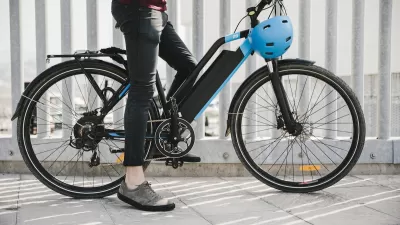The queue to apply for California’s new e-bike incentive program, which only offered 1,500 vouchers, reached 100,000 people.

The California Air Resources Board (CARB)’s new e-bike incentive program launched with “no technical issues,” but the 1,500 vouchers were snapped up within minutes due to high demand, according to the agency.
As Melanie Curry explains in Streetsblog California, the long-awaited program only made 1,500 vouchers available, while the queue on the CARB website at one point reached 100,000. “People who tried to apply were frustrated that there was a lot of waiting, with little communication about that wait, and were surprised that the window to apply closed abruptly about forty minutes into the launch, leaving many people out.”
As Curry notes, CARB could have communicated more effectively about the timing of the application and the documentation required. However, the larger problem is the small number of vouchers available. Demand for e-bikes is encouraging — and the state could support it by expanding the program. “Note as well that California invests far more in incentives for electric cars than in cheaper, cleaner, more efficient, healthier, and much less damaging e-bikes.”
FULL STORY: E-bike Incentive Launch a “Mess”?

Trump Administration Could Effectively End Housing Voucher Program
Federal officials are eyeing major cuts to the Section 8 program that helps millions of low-income households pay rent.

Planetizen Federal Action Tracker
A weekly monitor of how Trump’s orders and actions are impacting planners and planning in America.

The 120 Year Old Tiny Home Villages That Sheltered San Francisco’s Earthquake Refugees
More than a century ago, San Francisco mobilized to house thousands of residents displaced by the 1906 earthquake. Could their strategy offer a model for the present?

HSR Reaches Key Settlement in Northern California City
The state’s high-speed rail authority reached an agreement with Millbrae, a key city on the train’s proposed route to San Francisco.

Washington State Legislature Passes Parking Reform Bill
A bill that would limit parking requirements for new developments is headed to the governor’s desk.

Missouri Law Would Ban Protections for Housing Voucher Users
A state law seeks to overturn source-of-income discrimination bans passed by several Missouri cities.
Urban Design for Planners 1: Software Tools
This six-course series explores essential urban design concepts using open source software and equips planners with the tools they need to participate fully in the urban design process.
Planning for Universal Design
Learn the tools for implementing Universal Design in planning regulations.
Ada County Highway District
Clanton & Associates, Inc.
Jessamine County Fiscal Court
Institute for Housing and Urban Development Studies (IHS)
City of Grandview
Harvard GSD Executive Education
Toledo-Lucas County Plan Commissions
Salt Lake City
NYU Wagner Graduate School of Public Service





























